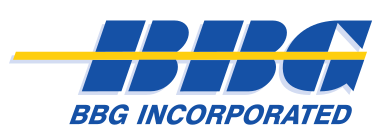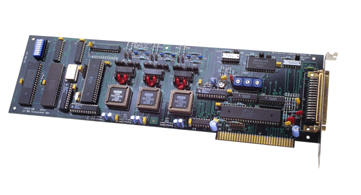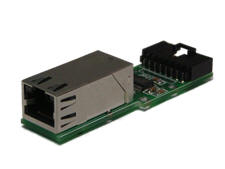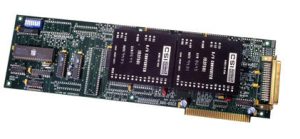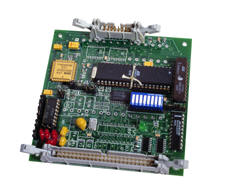The BBG-1108b is a “SMART” interface due to the onboard processor which communicates with the PC bus through shared memory, thus, requiring minimum PC processor time. Synchro/resolver inputs are processed by the onboard processor and stored in shared memory. This information is then read by the PC processor under interrupt control or polled operation. Software drivers included with the BBG-1108b provide easy integration, thus, shortening product development cycle and time to market. DC power is supplied by the PCbus requiring no external power supplies.
In situations not requiring a PC interface, the BBG-1108b operates in a “STAND-ALONE” mode. With the addition of an external +5 volt power supply, the onboard processor converts the synchro/resolver inputs into serial data formats without the requirement of a PC bus. Upon applying power, the BBG-1108b reads the configuration switch, and fully configures and operates with no operator intervention required.
Synchro/resolver signals, reference inputs, and serial outputs are available on a 50 pin male (DB50P) connector.
- IBM PC Compatible
- 3-axis Synchro/Resolver Input
- NMEA-0183 Compatible Outputs
- RS-232, RS-422, RS-423, RS-485, MIL-STD-188C Protocols
- Stand-alone Mode with Additional +5V Power Supply
- Custom Implementations Available Upon Request
| Technical Specification | ||
| Parameter | Value | Units |
| Power Input | 5 | Volts |
| ? | Milliamps | |
| Temperature Range | ||
| Operating Temperature | 0 to +50 | °C |
| Storage Temperature | -65 to +150 | °C |
| Physical Characteristics | ||
| Full Size IBM PC Card | 4.5 x 13.5 x 0.6 | Inches |
| 11.4 x 34.3 x 1.5 | Centimeters | |
Card Layout:
Overview:
The BBG-1108b is a full-size IBM PC card which accommodates up to three channels of synchro/resolver inputs using industry standard components. Inputs are jumper selectable for synchro or resolver signals and can be configured for any desired voltage by a simple chip/resistor replacement. Synchro or resolver inputs are fused and transient protected.An onboard microcontroller processes the synchro/resolver information and stores it in dual port memory. This information is available to the host computer on demand or under interrupt control. Synchro information is passed over the PC bus in a binary angle measurement format (BAM) as shown in Table 2 (on the data sheet).
The processed angular information is, also, available on a 50 pin “D” connector as four channels of NMEA 0183 serial data. This output is available in RS-232, RS-422, RS-423, RS-485, or MIL-STD-188C protocols and is updated at a rate of once per second. Custom serial data formats and frequencies are available upon request.
